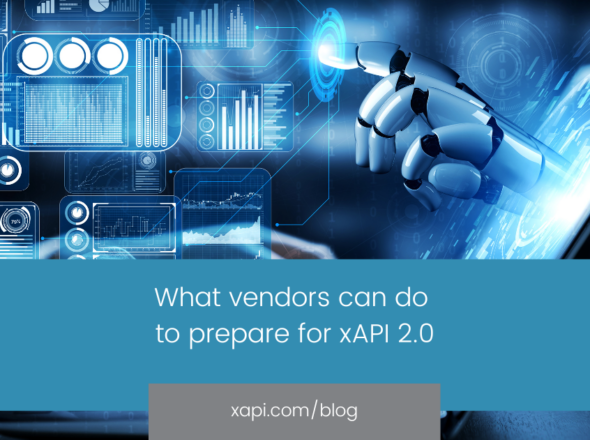Whether you’re new to eLearning standards, anxiously waiting for widespread cmi5 adoption or somewhere in between, this Launching Project CATAPULT blog series will help you better understand the cmi5 specification and follow the project’s progress.
cmi5 can play a key role in modernizing learning ecosystems by helping to bridge the gap between SCORM and xAPI, but despite the benefits cmi5 provides, adoption rates have been slow.
Project CATAPULT aims to change that.
What is Project CATAPULT?
In 2020, The Advanced Distributed Learning (ADL) Initiative awarded Rustici Software a contract to design and build easily accessible tools to aid in the adoption and governance of cmi5, now known as cmi5 Advanced Testing Application and Player Underpinning Learning Technologies (Project CATAPULT). The final deliverables will include an open source cmi5 Player, sample cmi5 course templates and a Conformance Test Suite. The project will play an important part in the Department of Defense’s (DoD) goals for modernizing digital learning and training. Project CATAPULT and cmi5 will help transition from traditional SCORM-based courseware to a distributed learning ecosystem that delivers diverse learning opportunities to not only to DoD employees, but also other government agencies, companies and to academia.
Rustici recently completed the design phase of the project in collaboration with ADL and key DoD stakeholders. Project CATAPULT is now well into the development phase and building the prototype for the Conformance Test Suite and the cmi5 open source player. The project will wrap up in late September of this year.
The role of cmi5
cmi5 is a profile for using xAPI and acts as the bridge across the SCORM and xAPI gap in the context of launched activities — think xAPI content with an LMS. The cmi5 specification was created by ADL and AICC to be able to package and deliver content that lives outside of a web browser, such as mobile apps, simulations and gamification platforms.
cmi5 also defines specific interoperability rules for content launch, authentication, session management, reporting and course structure definition for a consistent information model. This is especially important because the xAPI specification does not define how to structure online courses or how the learning content and the system hosting the content communicate with each other. Also, the xAPI specification doesn’t include authentication protocols to connect learning content with learners.
With the creation of Project CATAPULT and the cmi5 Conformance Test Suite, the number of authoring tools and LMSs adopting, supporting and adhering to the cmi5 specification will likely increase and help the eLearning industry move toward a more modern eLearning ecosystem.
Where can I learn more?
Watch the ADL and Rustici Software cmi5 Overview and Way Ahead webinar. Attendees will learn more about the cmi5 specification from cmi5 Working Group Leader Bill McDonald before diving into Project CATAPULT with project leader Brian Miller. The webinar also covers the scope of the work performed, what outcomes will be achieved and why it matters to the community. We also walk through some early mockups of the cmi5 Conformance Test Suite and cmi5 Player. If you’re interested in seeing where cmi5 is heading and the Project CATAPULT tools, this is the webinar for you!
Follow the Project CATAPULT journey and learn more about the cmi5 specification with these resources:
- Subscribe to the xAPI blog
- Watch the ADL webinar or where cmi5 is heading
- Keep up-to-date on Project CATAPULT
- Visit ADL’s cmi5 page and xapi.com’s cmi5 page for background
- View ADL’s cmi5 resources
- Join the cmi5 weekly working group
Have cmi5 or xAPI questions? We’re here to help. Ask us anything, really.


